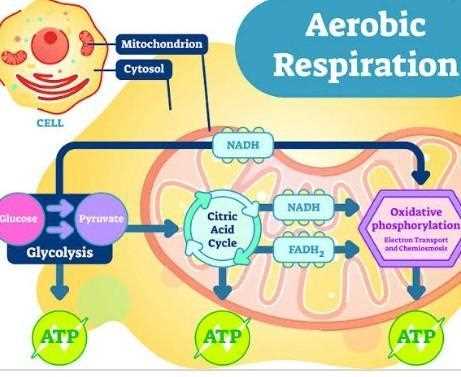
In the study of biology, cell respiration is a fundamental process that allows living organisms to convert food into usable energy. It is a complex series of biochemical reactions that take place in the cells of all living organisms. In this article, we will explore the key concepts and components of cell respiration and discuss the answers to a stem case related to this topic.
One of the key concepts in cell respiration is the production of adenosine triphosphate (ATP), which is the main energy currency of cells. ATP is produced through a series of steps, including glycolysis, the Krebs cycle, and oxidative phosphorylation. These processes occur in different parts of the cell, such as the cytoplasm and mitochondria, and involve the breakdown of glucose and other molecules to release energy.
Another important concept in cell respiration is the role of oxygen. Oxygen is the final electron acceptor in the electron transport chain, which is a part of oxidative phosphorylation. It is essential for the process of aerobic respiration, which produces a much larger amount of ATP compared to anaerobic respiration. Understanding the role of oxygen in cell respiration is crucial for understanding how different organisms obtain energy in different environments.
What is Cell Respiration and why is it Important?
Cell respiration is a vital metabolic process that takes place in all living cells, including both plants and animals. It involves the breakdown of glucose and other organic molecules to produce energy in the form of adenosine triphosphate (ATP). The process occurs in the mitochondria, which are often referred to as the powerhouses of the cell.
Cell respiration can be divided into three main stages: glycolysis, the citric acid cycle (also known as the Krebs cycle), and oxidative phosphorylation (also known as the electron transport chain). In glycolysis, glucose is broken down into two molecules of pyruvate, producing a small amount of ATP and NADH. The citric acid cycle then further breaks down pyruvate, generating more ATP and NADH. Finally, oxidative phosphorylation uses the energy stored in NADH to produce a large amount of ATP.
Cell respiration is important for several reasons:
- Production of ATP: ATP is the energy currency of the cell, and it is required for all cellular processes. Cell respiration provides a constant supply of ATP to meet the energy demands of the cell.
- Release of waste products: During cell respiration, carbon dioxide and water are produced as byproducts. These waste products are then eliminated from the cell, ensuring a proper balance of gases and maintaining cellular homeostasis.
- Regulation of cellular metabolism: Cell respiration helps to regulate the levels of various metabolic intermediates in the cell, ensuring that biochemical reactions proceed efficiently and that the cell can adapt to changing environmental conditions.
- Generation of heat: Cell respiration is an exothermic process, meaning it releases heat as a byproduct. This heat helps to maintain the body temperature in animals, allowing them to survive in different environmental conditions.
- Production of building blocks: Cell respiration also provides precursor molecules that can be used for the synthesis of other important biomolecules, such as amino acids, nucleotides, and fatty acids.
In conclusion, cell respiration is a fundamental process that plays a crucial role in the survival and functioning of all living cells. Without it, cells would not be able to efficiently produce energy, regulate their metabolism, eliminate waste products, or maintain proper temperature and homeostasis.
The Process of Cell Respiration
Cell respiration is a vital process that occurs in all living organisms, including plants and animals. It is the process by which cells obtain energy from glucose and other organic molecules and convert it into a form that can be used by the cell.
Cell respiration is divided into three main stages: glycolysis, the Krebs cycle (also known as the citric acid cycle), and the electron transport chain. Each of these stages plays a crucial role in extracting energy from glucose and generating adenosine triphosphate (ATP) molecules, which are the main energy currency of the cell.
Glycolysis
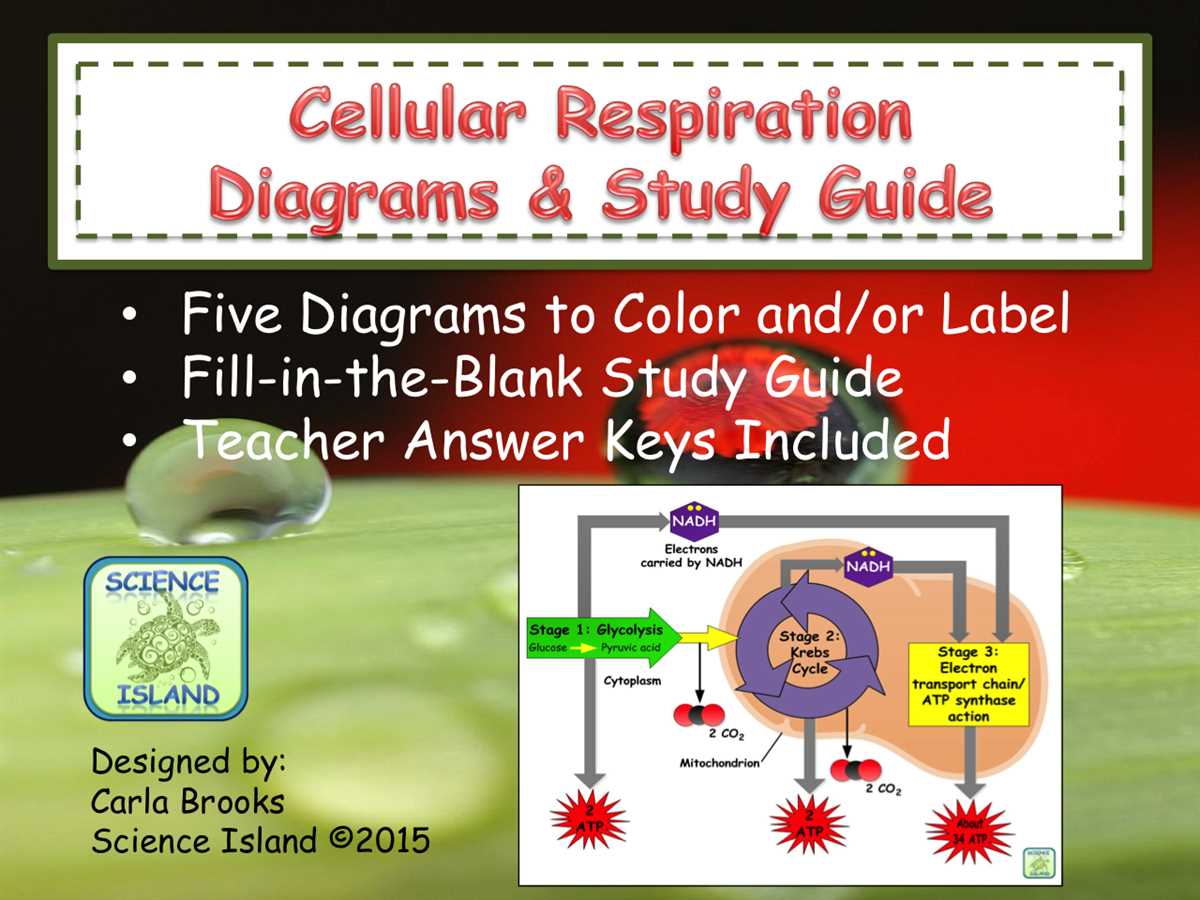
Glycolysis is the first stage of cell respiration and occurs in the cytoplasm of the cell. It is an anaerobic process, meaning it does not require oxygen. During glycolysis, a molecule of glucose is broken down into two molecules of pyruvate. This process also generates a small amount of ATP and NADH, which is an electron carrier molecule.
Krebs Cycle
The Krebs cycle takes place in the mitochondria of the cell and is an aerobic process, requiring oxygen. In this stage, the two molecules of pyruvate from glycolysis are further broken down, releasing carbon dioxide and generating high-energy electron carriers, such as NADH and FADH2. These electron carriers will later be used in the electron transport chain.
Electron Transport Chain
The electron transport chain is the final stage of cell respiration and also occurs in the mitochondria. It is an aerobic process that uses the high-energy electron carriers generated in the previous stages to produce a large amount of ATP. The electrons from the carriers are passed through a series of protein complexes, creating a proton gradient across the inner mitochondrial membrane. This gradient drives the synthesis of ATP by an enzyme called ATP synthase.
In summary, cell respiration is a complex process that involves the breakdown of glucose and the generation of ATP. It consists of glycolysis, the Krebs cycle, and the electron transport chain, all of which work together to extract energy from glucose and convert it into a usable form for the cell.
The role of ATP in Cell Respiration
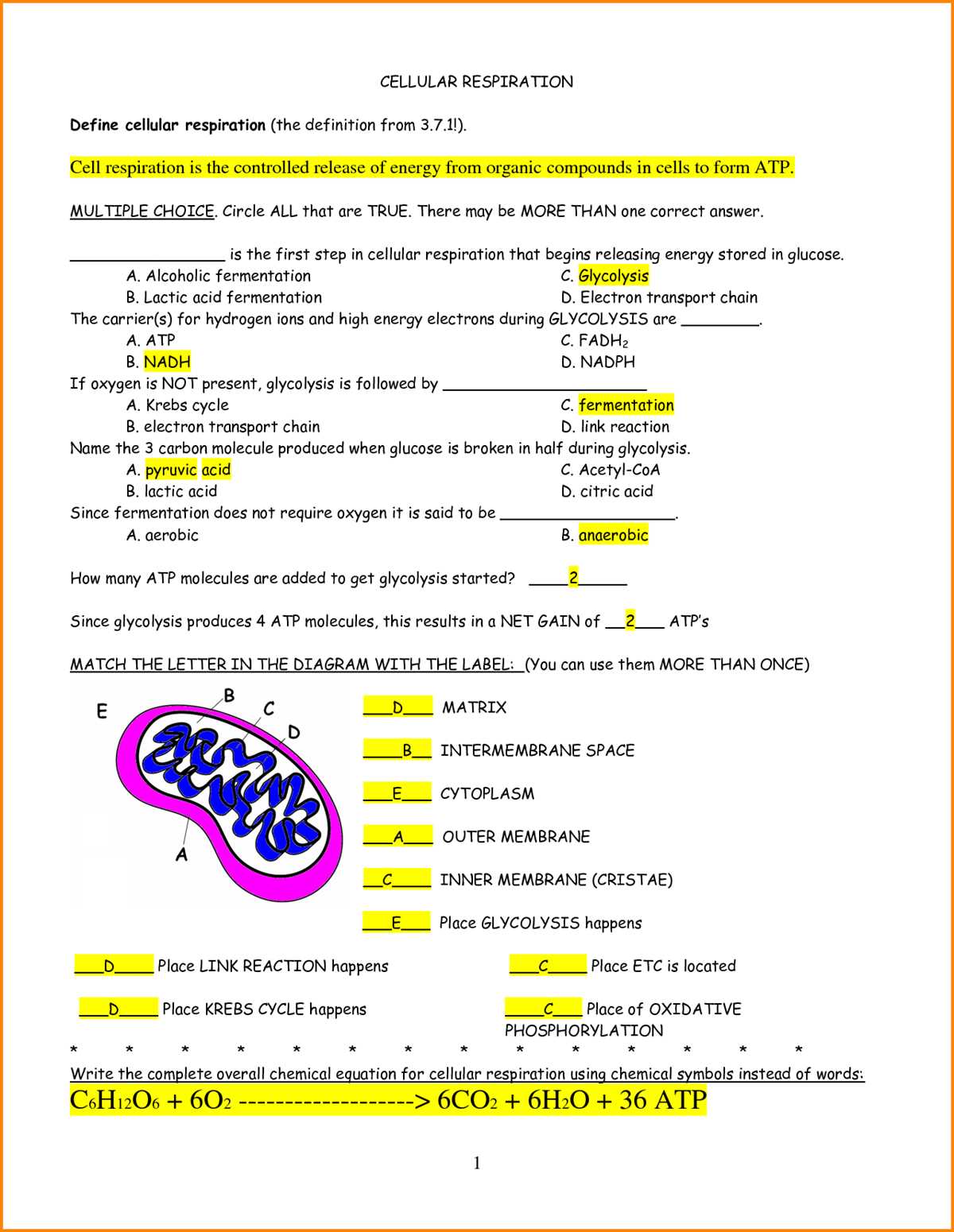
Adenosine Triphosphate (ATP) plays a critical role in cell respiration as it serves as the primary energy currency of the cell. ATP is a high-energy molecule that provides the necessary fuel for cellular processes, including cell respiration. It is often referred to as the “molecular unit of currency” because it is continuously generated and consumed within the cell.
During cell respiration, ATP is produced through a series of biochemical reactions in the mitochondria, which is often referred to as the powerhouse of the cell. These reactions involve the breakdown of glucose and other organic molecules to release energy. ATP synthesis occurs through the process of oxidative phosphorylation, which involves the transfer of electrons along the electron transport chain and the subsequent generation of a proton gradient across the inner mitochondrial membrane.
ATP is essential for cell respiration because it acts as an immediate source of energy for various cellular activities. When the cell requires energy, ATP is hydrolyzed by an enzyme called ATPase, which breaks the phosphate bond and releases energy. This energy is used to perform mechanical work, such as muscle contraction, or to drive active transport processes, such as the pumping of ions across membranes.
An important aspect of ATP is its ability to be rapidly regenerated. After being hydrolyzed, ATP can be regenerated through different pathways, such as substrate-level phosphorylation or the production of ATP through the process of oxidative phosphorylation.
In summary, ATP plays a central role in cell respiration by providing the necessary energy for cellular processes. Its high-energy phosphate bonds serve as a source of immediate energy, and its ability to be rapidly regenerated ensures a continuous supply of energy for the cell’s metabolic activities.
The connection between Cell Respiration and Energy Production
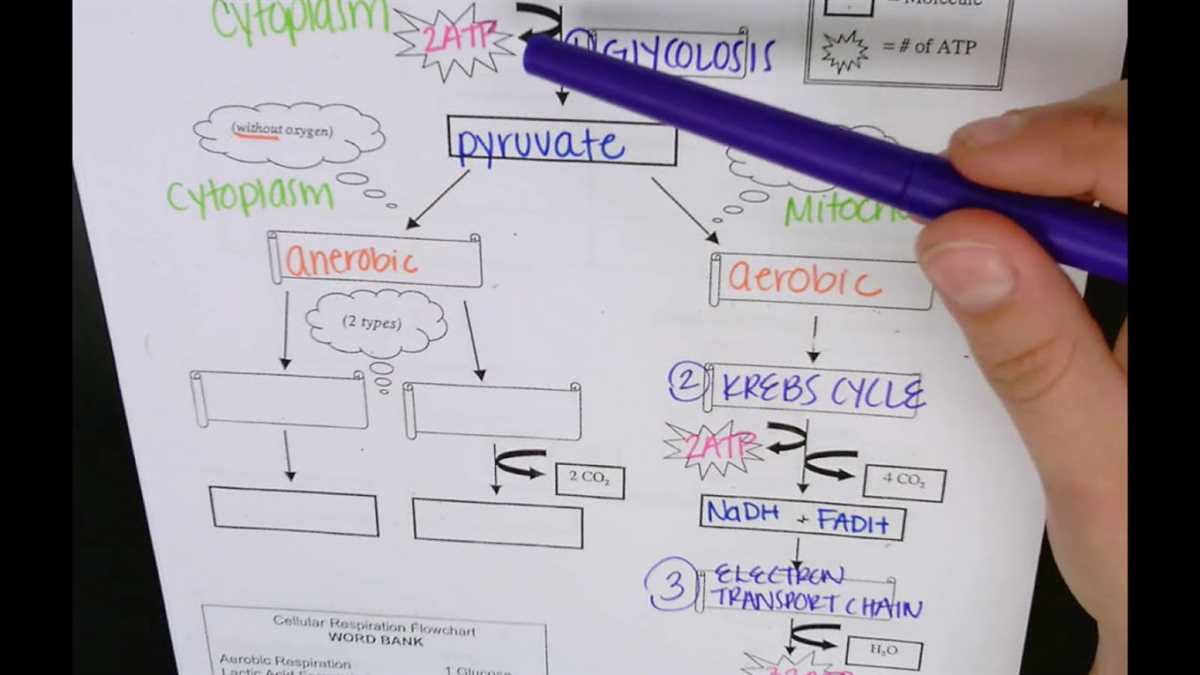
Cell respiration is the process by which cells convert nutrients into usable energy in the form of ATP (adenosine triphosphate). It is a fundamental process that occurs in all living organisms, from bacteria to plants and animals. Without cell respiration, organisms would be unable to produce the energy needed for their essential functions.
Cell respiration consists of three main stages: glycolysis, the Krebs cycle, and oxidative phosphorylation. In glycolysis, glucose is broken down into two molecules of pyruvate, producing a small amount of ATP. The pyruvate then enters the mitochondria, where it undergoes further breakdown in the Krebs cycle, generating more ATP and electrons. Finally, in oxidative phosphorylation, the electrons are transferred along a chain of proteins, creating a proton gradient that drives the synthesis of ATP.
The primary purpose of cell respiration is to generate ATP, which is the main source of energy for cellular processes. ATP powers various activities such as muscle contraction, nerve transmission, and metabolism. It acts as a molecular currency, providing the energy required for biochemical reactions within the cell.
In addition to ATP production, cell respiration also plays a crucial role in the recycling of electron transport chain components and the removal of waste products. Without these processes, cells would accumulate toxic byproducts and the electron transport chain would be unable to function properly.
Overall, cell respiration is vital for energy production in cells. It ensures that organisms have the necessary energy to perform essential functions and maintain homeostasis. Without cell respiration, life as we know it would not be possible.
The significance of Cell Respiration in Living Organisms
Cell respiration is a vital process in living organisms, as it provides the necessary energy for cellular activities. It involves the conversion of chemical energy stored in food molecules into ATP (adenosine triphosphate), which is the main energy currency of cells. Without cell respiration, organisms would not be able to carry out essential functions such as growth, reproduction, and movement.
One of the key roles of cell respiration is to supply the energy needed for metabolic processes. Organisms continuously require energy to carry out activities such as DNA replication, protein synthesis, and active transport across cell membranes. During cell respiration, glucose is broken down in the presence of oxygen to produce ATP. This ATP is then used to drive various cellular processes, allowing organisms to maintain homeostasis and respond to environmental stimuli.
Cell respiration also plays a crucial role in maintaining the balance of carbon dioxide and oxygen in the atmosphere. During the process of respiration, organisms take in oxygen and release carbon dioxide as a waste product. This carbon dioxide is then used by plants during photosynthesis to produce oxygen, creating a cyclical relationship between respiration and photosynthesis. Without cell respiration, the levels of carbon dioxide in the atmosphere would increase, leading to adverse effects on the environment and overall ecosystem balance.
Furthermore, cell respiration is essential for the survival of multicellular organisms, as it provides energy for specialized cells and tissues. Organisms with complex structures and functions, such as humans, require energy not only for basic cellular processes but also for more complex activities like muscle contraction, neuron transmission, and organ function. Cell respiration ensures that these specialized cells and tissues have a continuous supply of ATP to meet their energy demands.
In conclusion, cell respiration is of paramount importance in living organisms, enabling them to generate ATP, maintain metabolic processes, regulate atmospheric gas levels, and support the functioning of specialized cells and tissues. Understanding the significance of cell respiration helps us appreciate the intricate energy balance and interconnectedness of all living organisms.
Understanding the Stem Case Answer Key
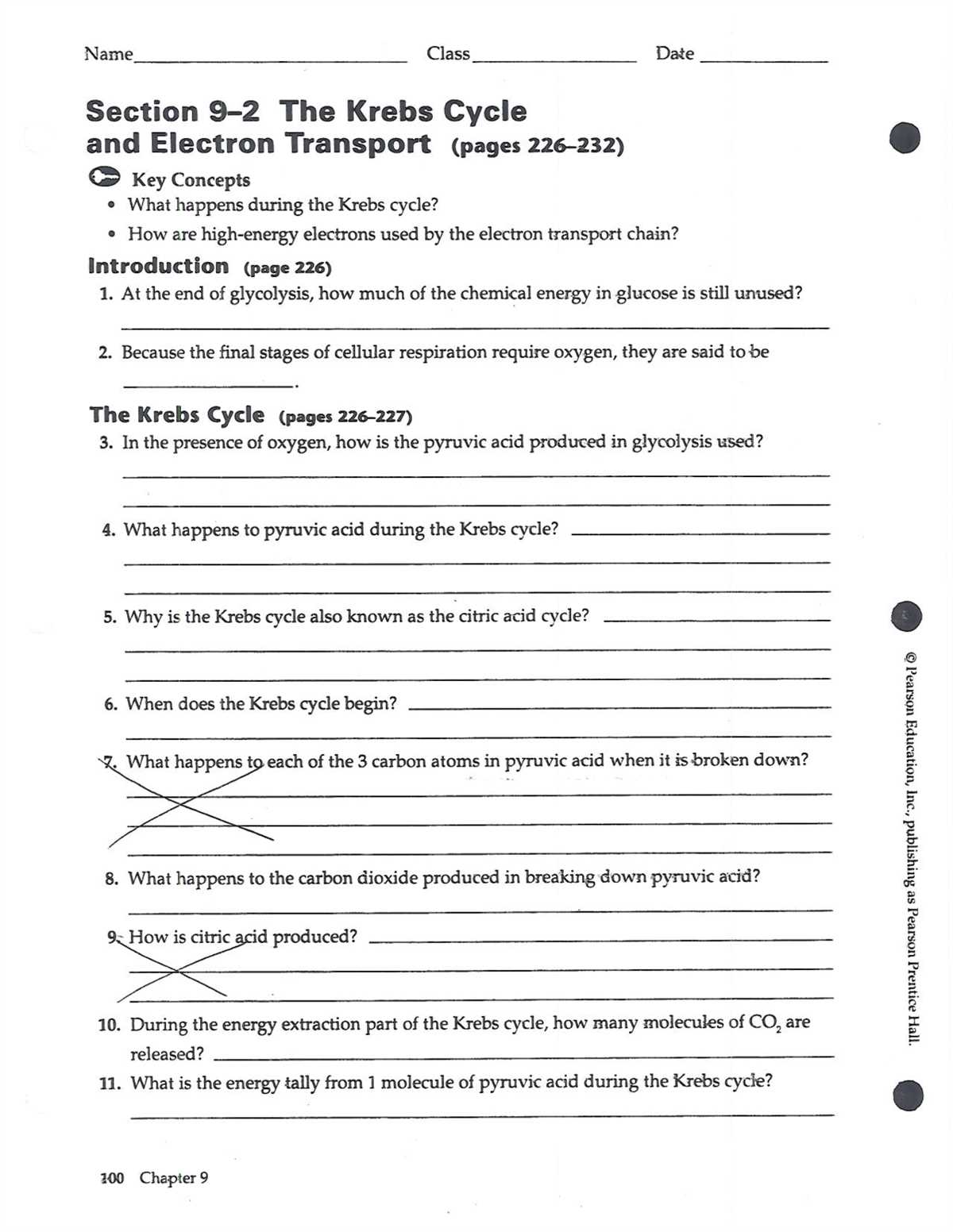
After analyzing the stem case answer key, it becomes clear that cell respiration is a complex process that involves several steps and molecules. The answer key provides a detailed explanation of each step and helps to understand the overall concept of cell respiration.
In the answer key, it is explained that cell respiration starts with glycolysis, which occurs in the cytoplasm of the cell. This step breaks down glucose into two molecules of pyruvate and produces a small amount of ATP. The answer key highlights the importance of glycolysis in cell respiration and its role in both aerobic and anaerobic respiration.
The next step in cell respiration is the Krebs cycle, also known as the citric acid cycle or the tricarboxylic acid cycle. The answer key explains that the Krebs cycle takes place in the mitochondria and is a series of chemical reactions that produce energy-rich molecules such as NADH and FADH2. These molecules play a crucial role in the final step of cell respiration.
The final step in cell respiration is the electron transport chain, which is the most efficient step in terms of ATP production. The answer key emphasizes that the electron transport chain takes place in the inner membrane of the mitochondria and uses the energy stored in NADH and FADH2 to generate a large amount of ATP. This step is essential for the survival and energy production of the cell.
Overall, the stem case answer key provides a comprehensive understanding of cell respiration and its various steps. It highlights the importance of glycolysis, the Krebs cycle, and the electron transport chain in this process. By studying the answer key, students can gain a deeper insight into the cellular mechanisms of respiration and appreciate the complexity of this essential biological process.